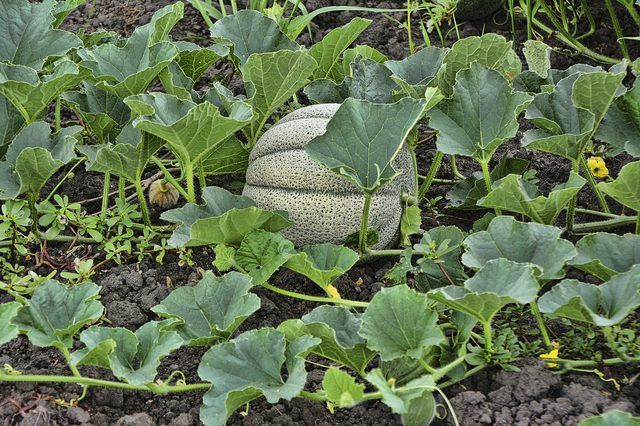Bulbs
Flower Basics
Flower Beds & Specialty Gardens
Flower Garden
Garden Furniture
Garden Gnomes
Garden Seeds
Garden Sheds
Garden Statues
Garden Tools & Supplies
Gardening Basics
Green & Organic
Groundcovers & Vines
Growing Annuals
Growing Basil
Growing Beans
Growing Berries
Growing Blueberries
Growing Cactus
Growing Corn
Growing Cotton
Growing Edibles
Growing Flowers
Growing Garlic
Growing Grapes
Growing Grass
Growing Herbs
Growing Jasmine
Growing Mint
Growing Mushrooms
Orchids
Growing Peanuts
Growing Perennials
Growing Plants
Growing Rosemary
Growing Roses
Growing Strawberries
Growing Sunflowers
Growing Thyme
Growing Tomatoes
Growing Tulips
Growing Vegetables
Herb Basics
Herb Garden
Indoor Growing
Landscaping Basics
Landscaping Patios
Landscaping Plants
Landscaping Shrubs
Landscaping Trees
Landscaping Walks & Pathways
Lawn Basics
Lawn Maintenance
Lawn Mowers
Lawn Ornaments
Lawn Planting
Lawn Tools
Outdoor Growing
Overall Landscape Planning
Pests, Weeds & Problems
Plant Basics
Rock Garden
Rose Garden
Shrubs
Soil
Specialty Gardens
Trees
Vegetable Garden
Yard Maintenance
Gardening With Melons
Learn about melons and watermelons and how to care for your own melon patch without filling the garden with rampantly growing vines.
Sweet, juicy melons (Cucurbitaceae - Cucurbit family), growing amid the rampant vines of the garden patch, evoke thoughts of Tom Sawyer's warm, moonlit adventures. While Tom and his real-life counterparts would've been after watermelons (Citrullus lanatus), there are seven other types of edible melons that you can grow in your personal melon patch.

Muskmelons
The fruits known as melons are muskmelons (Cucumis melo). There are seven groups of muskmelons, which can pollinate each other and create new hybrids, but they cannot cross with other members of the Cucurbit family.
Armenian Cucumber
The Armenian cucumber (Cucumis melo var. flexuosus), also known as the snake or serpent melon, is a muskmelon, although its fruits look and taste like cucumbers. Its heavily ribbed, light green fruits grow from 12 to 36 inches long.
Asian Pickling Melon
Also known as oriental pickling melon, the Asian pickling melon (Cucumis melo var. conomon) has smooth, oblong fruits and crisp flesh. Traditionally, the fruits were cooked or pickled. Young fruits may be eaten raw or in salads, and larger fruits may be stuffed with meat or vegetables and baked. 'Green Striped' has green skin, while 'Katsura Giant' and 'Numane' have white skin.
European Cantaloupe
The European cantaloupe (Cucumis melo var. cantalupensis) features light green skin with deep ribs and sweet orange flesh. When ripe, its fruits do not slip easily from the vine like other melons. It was developed in the Italian town, Cantalupi, near Rome. Melons in this category include Galia and charentais. The European Cantaloupe is considered the true cantaloupe.
Mango Melon
Mango melons (Cucumis melo var. chito) and other members of the Chito group, including melon apple, garden lemon, orange and vine peach melons, have small fruits. The yellow or orange fruits are usually pickled.
North American Cantaloupe
The cantaloupe grown in the Americas is known as the North American cantaloupe (Cucumis melo var. reticulatus). The fruit has a tan netting over a beige or yellowish skin and sweet, musky, orange flesh. Persian melons also belong in the Reticulatus group.
Queen Anne's Pocket Melon
When daily bathing was considered unhealthy, ladies carried these fragrant orange-size melons in their pockets. Queen Anne’s pocket melon (Cucumis melo var. dudaim) is also known as plum granny, stink melon or vine pomegranate. The decorative little melons feature orange and yellow stripes with edible white flesh.
Winter Melons
Those in the Inedorous group (Cucumis melo var. inodorous) are known as winter melons, not because they grow in winter but because they have the longest growing season, ripening in late fall. If you are forced to harvest your casaba, crenshaw or honeydew melons before they are ripe due to an impending frost, they will continue to ripen while in storage.
Watermelon
First domesticated in Africa, the watermelon's refreshing fruits are valued for their sweet, juicy flesh. While technically not a melon, the watermelon is also a member of the Cucurbit family. Despite the similarities, including the melonlike flesh and sweet flavor, watermelons do not cross-pollinate with melons.
General Care
Melons and watermelons share the same planting and cultural needs. Both require a long, warm growing season and plenty of water -- at least 1 inch per week, or 6 gallons for every square yard of soil. A well-drained garden bed amended with several inches of compost provides the nutrients melons need to thrive. Side dress each plant with a shovelful of compost or a bucket of compost tea every two weeks through the growing season.
Warning
Wear gear to protect your skin, eyes and lungs when digging or working with compost and compost tea. That includes shoes, long pants, long sleeves, gloves, safety goggles, a dust mask and a large-brimmed hat.
Grow Up, Not Out
Because melons grow on vines that can reach 15 feet or more, some gardeners grow them on sturdy trellises. With four-by-four posts firmly planted in the ground and wire strung between them, the melon patch can grow up instead of sprawling over the garden. Use slings to support the melons so they don't break away from the vines as they mature.
Tip
Growing melons on a trellis allows air circulation, reducing the chance of powdery mildew and other fungal diseases.
It is easier to monitor and treat trellised vines for pests, such as aphids or cucumber beetles.. A strong blast of water removes the green, soft-bodied aphids, while you can hand-pick beetles and drop them into a bucket of soapy water.